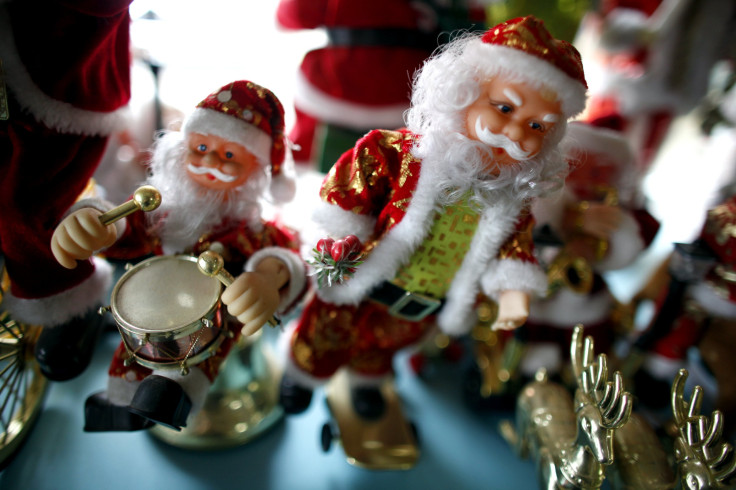Christmas Traditions Around The World 2015: How They Celebrate In Germany, France, Mexico And Other Nations

Unlike so many other holidays that are specific to individual countries — Thanksgiving in the United States, Bastille Day in France — Christmas is a tradition that can be seen across the globe, with children of many cultures waiting on the night of Dec. 24 for their own version of the fat man in the red suit. Christmas is celebrated both as a religious holiday, when Christians attend midnight masses and sing songs celebrating the birth of Jesus Christ and a secular holiday, filled with rushed shopping and plenty of eggnog to go around, leaving a lot of room for a wide group of people to find their place around the holiday season.
While many symbols of Christmas are associated with the United States — Charlie Brown’s not-such-a-bad-little tree, Rudolph’s shiny red nose, running over someone in Toys “R” Us to get the last doll on the shelf — many Christmas traditions have their origins elsewhere, especially in Europe. These traditions have been modified, adapted or just plain ignored throughout the world.
Germany: The ultimate symbol of Christmas is, of course, the Christmas tree, which has its origins in Germany. Bringing evergreen trees inside during the winter had long been a winter tradition and by the 1820’s, the tradition had made its way to the United States by way of German immigrants in Pennsylvania.
In some homes across Germany, parents are known to decorate a specific room in the house for Christmas, but lock it up so the children of the home can’t see it, according to the BBC. The parents then ring a bell and the children are allowed to go in and see for the first time.
France: The French are known for their love of extended dinners of some of the world’s greatest dishes and Christmas is no different. The big dinner in France is actually held on Christmas Eve, and is known as Reveillon. The meal can last up to six hours, and is a sacred tradition around France. Great care is given to the decorations put on the long table, and the menus vary across France. While Parisians are known to dine on luxurious dishes such as oysters, foie gras and caviar, residents of Alsace and Burgundy take a route more familiar to Americans with a stuffed turkey often seen as the dinner centerpiece.
Ethiopia: Ethiopians actually celebrate Christmas later than December 25. Following the Julian calendar, Ethiopians host Christmas celebrations Jan. 7 each year, a day that typically starts with a fast, according to One.org. A church service is then followed by a feast quite different than what is typically seen in the United States. The meal involves stew and sourdough bread most of the time, and most families in Ethiopia actually don’t exchange gifts, but instead fill it with games and sports.
Tis the season! See how countries around the world celebrate Christmas - https://t.co/ez6XTksSLN pic.twitter.com/oXcrbfjXhd
— Travel Channel (@travelchannel) December 17, 2015Argentina: Fireworks and balloons are at the center of it all during the Christmas celebration in Argentina. Children delight in the fireworks most of the time and at night, Argentineans are known to light the inside of paper lanterns and release them into the sky, speckling the South American night. Children in Argentina put their shoes out to get gifts in them. Some children have adopted this old tradition for modern times, placing their shoes beneath a Christmas tree instead.
Mexico: Piñatas hold a special place in the Mexican consciousness during Christmastime. Piñatas can be filled with everything from wrapped candies to fruit, and are often shaped as the Star of Bethlehem, which helped the Biblical Magi to find Jesus on the night of his birth. “It’s not really Christmas time until I’m surrounded by hundreds of [star] piñatas,” Joshua Cruz, a third generation piñata maker in Mexico said to the Christian Science Monitor.
© Copyright IBTimes 2025. All rights reserved.





















